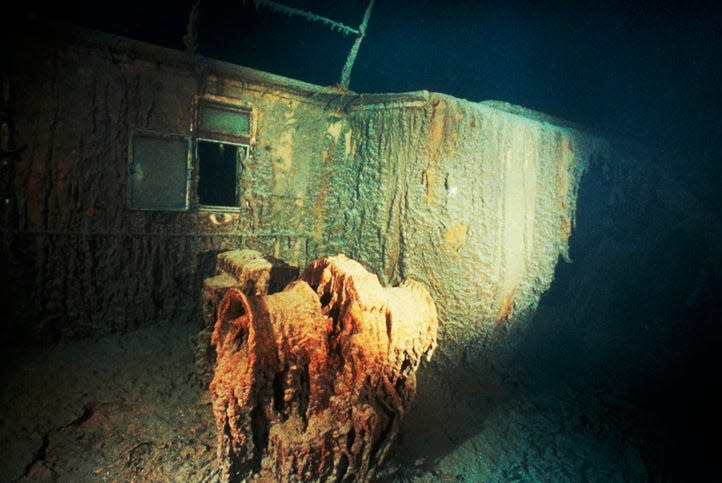Divers Looked for Treasure in the Titanic’s Wreckage—and Discovered a Stunning Lost Statue

The RMS Titanic, Inc.’s latest expedition to the Titanic wreck site included over two million photos to capture the changing scope of the shipwreck.
The team rediscovered the 2-foot-tall bronze statuette of the Roman goddess Diana, spotted in 1986, but lost since.
Chronicling the changes in the Titanic has shown a 15-foot-long section of the port side of the bow’s railing has fallen to the seafloor.
Researchers have uncovered the bronze “Diana of Versailles” statuette, once a centerpiece in the doomed Titanic’s first class lounge, and now mired in oceanic muck. It marks the first sighting of the Roman goddess Diana statue since 1986 and highlights the sunken ship’s ongoing decay.
The Georgia-based RMS Titanic, Inc. has the only legal salvage claim to the Titanic, the famous British passenger liner that struck an iceberg and tragically sank on April 14, 1912. A 2024 expedition to the North Atlantic Ocean wreck site was the ninth by the company, and the first since 2010. In the latest expedition, the crew spent 20 days taking over two million photos of the site, fully mapping the wreck and debris field.
The researchers hoped to uncover Diana, the 2-foot-tall statue that once signified luxury and design in the most expensive passenger area of the ocean liner, they wrote in a statement. When the wreck occurred 112 years ago, the lounge couldn’t withstand destruction. Diana once appeared in a photograph in 1986, but it hasn’t been seen since—until now.
The team had an idea of where the statue sat, away from the ship, but with only a few hours left on the final day of the 2024 expedition and time waning, the researchers were losing hope of locating Diana. But fortune favored the search, and the team found and photographed the statue in the nick of time.
While the debris field continues to contain pieces of the lost ship, the latest expedition also shows how the Titanic is altered while sitting in the cold and dark of the ocean floor.
The researchers discovered how the iconic bow of the ship had fallen away. “The once miraculously intact railing surrounding the bow’s forecastle deck was missing a 15-foot-long section on the port side,” according to the statement. A review of images from the seafloor taken earlier confirmed that the railing fell in a single piece and is now on the seafloor. The team believes the railing broke off at some point since 2022.
“We are saddened by this loss and the inevitable decay of the ship and the debris,” the team wrote. “This evidence strengthens our mission to preserve and document what we can before it is too late.”
The trouble for the White Star Line-owned Titanic started that morning, according to Biography. The ship received a warning about ice in its path from the Caronia, and got another message about dangerous ice from the Baltic in the early afternoon. While Captain Edward Smith relayed the information to the chairman of the White Star Line, no one took action that day.
Later in the evening, after 7 p.m., the Titanic’s crew overheard a third ice warning, this time from the Californian alerting another ship in its fleet. The crew disregarded a fourth advisory from the Mesaba, and the telegraph operators didn’t record a complete warning that the Californian directly transmitted to the Titanic.
As the warnings piled up unheeded, around 11:40 p.m., a crew member spotted an iceberg in the Titanic’s path, but it was too late to move. The opportunity to decelerate or divert southward to evade the icebergs had already slipped away. The Titanic collided with the iceberg, sustaining damage to its forward section. The iceberg tore several holes in the ship’s side, and seawater rapidly began to pour in. Shortly after the collision, Captain Smith rushed to the bridge to evaluate the crisis and discovered that the ship was sinking.
The first distress call went out after midnight.
The Titanic didn’t have enough lifeboats to carry all its passengers to safety. Roughly 20 minutes past 2 a.m. on the morning of April 15, the Titanic plunged into the depths of the North Atlantic.
The 2024 expedition mapped not only the full wreck and its debris field, but scouted “countless artifacts” for future recovery.
You Might Also Like
